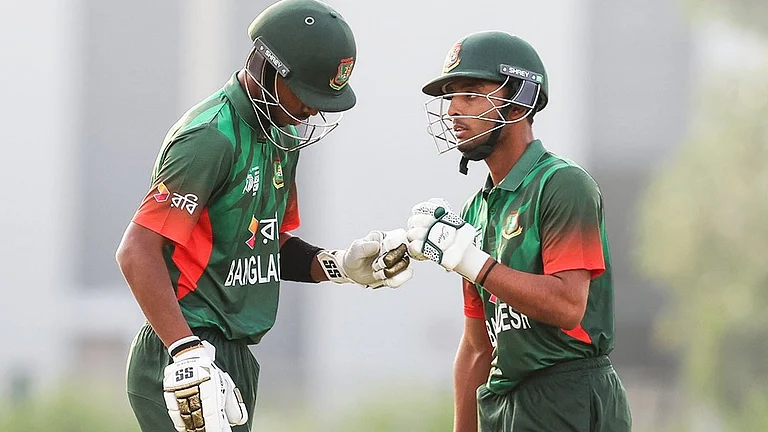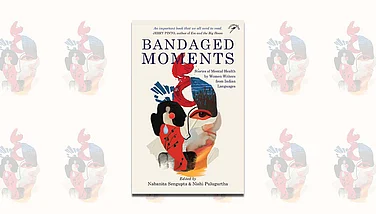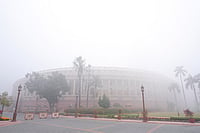India’s history is a curiously unpeopled place. As usually told, it has dynasties, epochs, religions and castes—but not many individuals. Beyond a few iconic names, most of the important historical figures recede into a haze, both for people outside India and for many Indians themselves. Incarnations is an experiment in dispelling some of the fog by telling India’s story through 50 remarkable lives. The essays in this book move headlong across 2,500 years of history, from the political and moral preoccupations of India’s earliest historical personality, the Buddha, to the late 20th-century capitalist imagination of the industrialist Dhirubhai Ambani. On the way, we meet kings, religious thinkers and freedom fighters, as also poets, painters, mathematicians and radical social reformers.
Jawaharlal Nehru famously described this past as a palimpsest, where each successively dominant culture, religion or group left its traces, never quite effacing what came before it. It is a beautiful image, evocative of the country’s deep civilisational stratigraphy, but I’ve come to think of it as too passive. To me, India’s past is an arena of ferocious contest, its dead heroes continually springing back to life and despatched to the frontlines of equally ferocious contemporary cultural and political battles.
The subcontinent on which these stories unfold is the only place where each of the world’s four great religions—Hinduism, Buddhism, Christianity and Islam—have each at different times ruled large areas. Through religious collisions and philosophical and ethical explorations, many of the individuals in this book were part of intense arguments that have been kept going for millennia: about what kind of life is worth living, about what kind of society is worth having, about which hierarchies are morally legitimate, about what role religion has in the political and legal order and about what kind of place India should be. Such arguments have kept India in a permanent—and, on balance, productive—state of openness about what the country and its people are. A civilisation that is able to produce a Mahavira, a Mirabai, a Malik Ambar, a Periyar, a Muhammad Iqbal and a Mohandas Gandhi is a place open to radical experiments with self-definition. It is particularly worth recalling that history and creative energy at a moment when some in India seek to transform the ferment of ideas over what India is and should be into a singular religious concoction.
Of course, much still remains unknown and disputed about Indian history, especially for the period before 1000 AD. About the lives of Indian women, apart from that of a few queens, the records are distressingly sparse right through to the 20th century. Even now, much of India’s history is endangered: some of who we were and what we’ve done sits in uncatalogued heaps, often in languages few still know. And yet in the past few decades, we have made significant advances in our ability to make sense of the Indian past, through developments in archaeology, philosophy, mathematics, art history and literature.
If you don’t yet know the arresting stories behind some of the names I have mentioned (say, Malik Ambar, a gifted 17th-century Abyssinian slave-turned-Deccan-warrior-king) or others you’ll encounter in this book (such as Chidambaram Pillai, a dogged Tamil nationalist who took on the steamship might of the British empire), that is perhaps not accidental. Which personality gets remembered, how history is told, and who gets to tell it are all matters of political dispute in India. Some historical icons are so staunchly defended against scrutiny that libraries whose collections have enabled scholars to write about those icons have been attacked and vandalised. Books thought to be insufficiently reverent towards cherished figures are pulped and banned, their authors threatened, silenced, or worse.

British imperialists liked to suggest Indians were indifferent to their history (and inept at independent thinking to boot) because of their attachment to doll-like gods and caste rituals. Indians saw things differently, of course: the colonisers had pillaged the subcontinent’s historical resources with the same voraciousness as they had plundered the teakwood and tea, unmooring their subjects from their traditions and pasts. Beginning in Bengal after the turn of the 20th century, successive generations of nationalists struggled to gain control of their own history. And after Independence was won, in 1947, a host of long-suppressed claimants—regions, castes, religious communities—pushed for the primacy of their own favourite leaders within a new Indian pantheon. One of the most predictable acts of newly elected state or national governments was—and is—to rewrite history textbooks to their liking.
The country’s current ruling ideology aspires to define India as a Hindu nation, and to endow it with appropriately Hindu antecedents, with the inevitable simplifications that involves. Despite such a tricky political climate, or maybe because of it, this seemed a crucial moment to explore the Indian past, in search of a little more complexity and nuance. It is often said of India that, given all its tensions, it’s a miracle that it holds together. To me, that’s partly explicable, and some explanations can be found in the intellectual and cultural capital embodied by the lives I have chosen for this book.
One striking feature of India’s history is how many imaginative struggles have been waged against what remains a profoundly rigid society. Sometimes—as with the 16th-century ruler Krishnadevaraya, the poet Rabindranath Tagore and the painter Amrita Sher-Gil—the battle against conformity has been inward and psychological. Sometimes, it has been outward, against the social order, frequently assuming the form of an assault on the hierarchies of caste. From the Buddha and Mahavira onwards to Phule, Periyar and Ambedkar, we see some of India’s most original minds engaging with this system of social oppression, which has elicited condemnation for almost as long as it has existed, yet has time and again been able to absorb and even gain a degree of immunity from such critiques.
Occasionally, as I travelled around the country researching for this project, I overheard children cheerfully explaining to their friends what I was up to: “He’s telling the story of how India became number one.” Indeed, it’s a habit of national histories to justify the present as the perfect and necessary outcome of what came before. But as I pursued the stories that make up this book, my own thinking sometimes veered in the opposite direction: I was moved by how many of these lives pose challenges to the Indian present and remind us of future possibilities that are at risk of being closed off.
Meanwhile, though, new possibilities have undeniably opened up. As recently as a few decades ago, what happened, or was happening, in India was often considered peripheral to what used to be called the first world. Those of us who wrote about the country had to make arguments for its relevance to, for instance, the larger story of democracy in the world. Then, as India’s presence in the global economy, and its culture and politics, became more visible, much of the writing about it was driven by perplexity: where was India going, what did it want?
Today, India, in both its positive and negative aspects, is far less peripheral to discussions about the world at large. Given that, I hope the ideas and arguments embodied by the 50 people in this book help complicate not just the stories Indians like to tell themselves, but also the stories the world tells about us—and about itself. India’s most compelling minds have often been forced to exist in splendid isolation; I would like to see them restored to their rightful place in the world—as figures engaged with other individuals and ideas across time and borders. In this way, I think readers might better grasp that many concepts the West sees as unique to itself actually have parallels, resonances and counter-arguments in other parts of the globe.
For that’s how I see Incarnations, in the end: as an open invitation to a different kind of conversation about India’s past, and its future. And among my hopes is that, after finishing the last of these 50 portraits, a reader might share at least some of what I’ve come to feel strongly: that India’s capacity to change itself, and to challenge its own dogmas (and sometimes those of the wider world), is not just a historical relic. It’s a still-available capacity, one more necessary than ever.
























